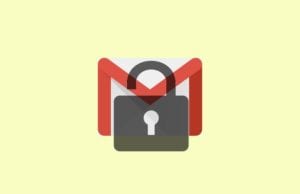 With all of the focus on online security these days, we wanted to take a look at how to encrypt some of the most popular email services. Of course, we are talking about Gmail, Outlook, iOS, and Android. These days, any data you put into your email is unsecured. If you only have some of your emails encrypted, you run the risk of being less secure. Now, we are going to answer a few questions about this topic.
With all of the focus on online security these days, we wanted to take a look at how to encrypt some of the most popular email services. Of course, we are talking about Gmail, Outlook, iOS, and Android. These days, any data you put into your email is unsecured. If you only have some of your emails encrypted, you run the risk of being less secure. Now, we are going to answer a few questions about this topic.
What is Email Encryption and Why is it Important?
Encrypted emails are protected by mixing up the content enough that it becomes a puzzle. Because of the PKI (public key infastructure), you need to have the key to solve the puzzle. Each person is assigned 2 different keys in the form of a digital code. It is important when it comes to data breaches. No one wants their data stolen, but if you are not encrypting all of your emails, you are certainly taking a risk.
Encryption Types
There are two different types of encryption that you will see. Those are S/MIME and PGP/MIME.
- S/MIME – Secure Multipurpose Internet Mail Extension. The primary features include centralized authority, already built into large web-based email companies like Gmail and Outlook, and the key is made for you. Providers with this support include Gmail, Outlook, OSX, and iOS devices.
- PGP/MIME – Pretty Good Privacy/Multipurpose Internet Mail Extension. This version is different and includes decentralized authority and you need a a 3rd party encryption tool to implement. Providers that offer support for this type include Yahoo, AOL, and Android devices.
How to Encrypt Gmail
Fortunately, Gmail already has S/MIME built in. However, it only works if both parties have it enabled. Follow these steps to encrypt your Gmail.
- Enable hosted S/MIME (by following the Google directions).
- Write your email.
- When you enter the recipient, you will notice a lock to the right of the name.
- Click on “view details” to change the S/MIME settings or level of encryption.
Please note that a green color code means the information is protected by S/MIME encryption encryption and can only be decrypted with a private key. Gray means the email is protected with TLS. As you might guess, red means there is no encryption security.
How to Encrypt Emails in Outlook
Outlook is also compatible with the S/MIME protocol but there is additional setup. When using Outlook, follow these steps.
- Start by enabling S/MIME encryption. You will need to get a certificate or digital ID from your organization’s administrator and installing S/MIME control. Follow Office’s steps for setting up to use S/MIME encryption.
- You can encrypt all messages or digitally sign all messages by going to the gear menu and clicking S/MIME settings. Choose to either encrypt contents and attachments of all messages or add a digital signature to all messages sent.
- Encrypt or remove individual messages by selecting more options (three dots) at the top of a message and choosing message options. Select or deselect “Encrypt this message (S/MIME).” If the person you are sending a message to doesn’t have S/MIME enabled, you’ll want to deselect the box or else they won’t be able to read your message.
iOS Email Encryption
Please follow these steps for iOS email encryption.
- Start by going to advanced settings and switch S/MIME on.
- Now, you need to change “Encrypt by Default” to yes.
- Compose a message and lock icon will appear next to the recipient. Click the lock icon so it’s closed to encrypt the email.
Encrypting Emails With Android
Since it is not inherently built in, you would need to usea 3rd party app and it will require extra setup.
And there you have the top ways to encrypt your email with some of the services. Please share this post with your friends so they can encrypt their emails for Gmail, Outlook, iOS, and Android. Follow us @VPNFan for the latest VPN reviews and promotions from leading providers.
